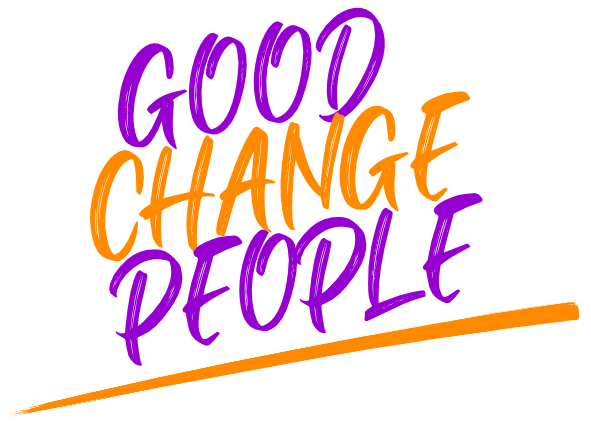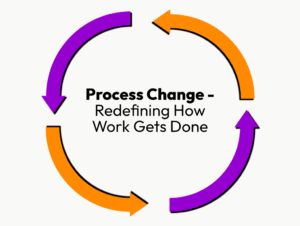The art of business change management consulting takes on distinctly different flavours depending on whether you’re working within the corridors of government or the boardrooms of private enterprise. While the fundamental principles of organisational transformation remain constant, the execution, pace, and complexity of change initiatives vary dramatically between these two sectors. Understanding these differences is crucial for consultants who navigate both worlds and organisations considering major transformational projects.
Scale and Structural Complexity: David vs Goliath
The most immediately apparent difference lies in sheer organisational size and structural complexity. Public sector entities often dwarf their private counterparts in scale, with government departments employing tens of thousands of people across multiple geographic locations, each with distinct regional variations and local stakeholder groups. An NHS transformation, for instance, might involve co-ordinating change across hundreds of hospitals, thousands of clinics, and hundreds of thousands of employees, each operating under slightly different local protocols and union agreements.
Private sector organisations, while potentially large, typically maintain more streamlined hierarchies and clearer reporting structures. A multi-national corporation implementing enterprise-wide change can leverage standardised processes and centralised decision-making in ways that public sector organisations simply cannot. The private sector’s ability to impose uniform change across divisions, while not without challenges, pales in comparison to the complexity of aligning multiple government agencies, each with their own statutory responsibilities and political sensitivities.
This structural difference fundamentally alters the consultant’s approach. In the private sector, change management often follows a more linear path with clearly defined decision points. In the public sector, consultants must navigate a web of interdependencies, where changes in one department ripple through multiple agencies, requiring extensive stakeholder mapping and consensus-building across entities that may have competing priorities.
Budget Realities: Feast or Famine
Financial constraints present another stark contrast between sectors. Private sector change initiatives, while subject to business case scrutiny, often benefit from more flexible budget allocations and the ability to invest speculatively in transformation activities that promise future returns. When a private company identifies a competitive advantage through organisational change, it can typically mobilise resources quickly and adjust spending as circumstances evolve.
Public sector budget constraints operate under entirely different parameters. Every expenditure faces intense scrutiny, not just from internal stakeholders but from taxpayers, oversight bodies, and political opponents ready to critique government spending. Budget cycles are rigid, often planned years in advance, with limited ability to reallocate funds as project needs evolve. This creates a peculiar dynamic where public sector change initiatives must be planned with almost prophetic precision, yet operate in environments that are inherently unpredictable.
The consultant’s role shifts accordingly. In private sector engagements, budget discussions focus on return on investment and competitive positioning. In public sector work, consultants must master the art of demonstrating value for money while navigating complex procurement processes that can add months to project timelines. The need to justify every expense against public benefit creates additional layers of documentation and approval that simply don’t exist in private sector consulting.
The Red Tape Reality: Democracy’s Double-Edged Sword
Perhaps nowhere is the difference more pronounced than in approval processes and governance structures. Public sector change management must contend with democratic accountability mechanisms that, while essential for good governance, can significantly slow transformation efforts. Multiple layers of approval, from departmental sign-offs to ministerial approvals, parliamentary scrutiny, and public consultation periods, create extended timelines that would be unthinkable in private sector projects.
Consider a technology transformation project: a private company might move from concept to implementation in months, with senior leadership making decisive choices based on market analysis and competitive pressures. The same project in government might require environmental impact assessments, public consultations, parliamentary committee reviews, and compliance with dozens of regulations before the first system is installed.
This isn’t necessarily inefficient; it’s democratic. Public sector organizations serve diverse constituencies with competing interests, and the approval processes ensure that changes serve the public good rather than narrow interests. However, this creates unique challenges for change management consultants who must build momentum for transformation while navigating processes designed for deliberation rather than speed.
Speed of Delivery: The Pace of Change
The cumulative effect of these differences manifests most clearly in delivery timelines. Private sector change initiatives can pivot quickly, fail fast, and iterate based on market feedback. Agile methodologies align naturally with business environments where speed often determines competitive advantage.
Public sector transformation operates on geological timescales by comparison. What might take a private company six months to implement could require two to three years in government, not due to incompetence but due to the inherent complexity of democratic governance. Consultants must recalibrate their expectations and methodologies accordingly, building change management programmes that maintain momentum across extended timelines while surviving potential changes in political leadership.
Why Good Change People Thrives in Both Worlds
This is precisely where Good Change People excels. With over a decade of experience navigating both public and private sector transformations, we understand that successful change management isn’t about applying a one-size-fits-all approach—it’s about putting people at the centre of every initiative, regardless of sector.
Our people-centric methodology recognises that whether you’re working with a nimble tech startup or a sprawling government department, the fundamental challenge remains the same: helping individuals embrace and drive change rather than resist it. We’ve worked with organisations ranging from intimate 20-person teams to sprawling enterprises with over 100,000 employees, and we’ve learned that the human element of change remains constant even when everything else varies dramatically.
What sets Good Change People apart is our commitment to being approachable, collaborative, and genuinely partnership-focused. We don’t arrive as the traditional “big four” consultancy with predetermined solutions and hefty price tags. Instead, we take time to understand your organisation’s unique culture, challenges, and goals—whether you’re navigating Westminster’s corridors of power or Silicon Roundabout’s innovation hubs.
Our tailored approach means we can adapt our methodologies to work within tight public sector budgets and extended approval timelines, whilst equally supporting private sector clients who need rapid transformation to maintain competitive advantage. We equip teams with the mindset, tools, and capabilities to not just survive change but thrive beyond go-live, ensuring sustainable transformation that endures long after the consultants have departed.
In both sectors, the ultimate goal remains the same: helping organisations evolve to better serve their stakeholders. The path to that goal requires navigating very different terrains, but with Good Change People as your partner, you gain guides who understand both landscapes intimately and know how to help your people flourish in either environment.





